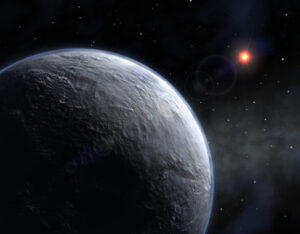Episode 004
On this episode…
Welcome Home! The discovery of a new planet for mankind.
In this second part we explain the current techniques being used to detect exoplanets;
- Star wobble
- Star transit
- A starshade
- Telescope coronagraph
- Gravitational lensing

We covered proposed projects like the Star Occulter (or Starshade). This would use a giant 45m (148ft) daisy-shaped plastic shield, in tandem with a powerful telescope trailing some 15,000km (9,300 miles) behind. The pair would be held in super accurate and stable alignment to give scientists time to image any planets orbiting the star under study and potentially analyse its atmosphere for the chemical signatures of life, or even industry (as we know it).
Then there are scheduled projects like PLATO, specifically designed as planet hunters – “PLATO will be our first attempt to find nearby habitable planets around Sun-like stars that we can actually examine in sufficient detail to look for life. Nearly all the small transiting planets discovered so far have been beyond our technology to characterise. PLATO will be a game-changer, allowing many Earth-like planets to be detected and confirmed and their atmospheres examined for signs of life.”
The goal is to find planets like Earth, not just in terms of their size but in their potential for habitability. To achieve this enormous task PLATO uses 34 small telescopes and cameras working together in small groups, under close computer control.
Toward the end of the programme Karl asked a question of our listeners: How would you propose to detect an advanced civilization by looking an atmosphere signature? What would you look for?
Links:
Books:





